Elisabeth Frink
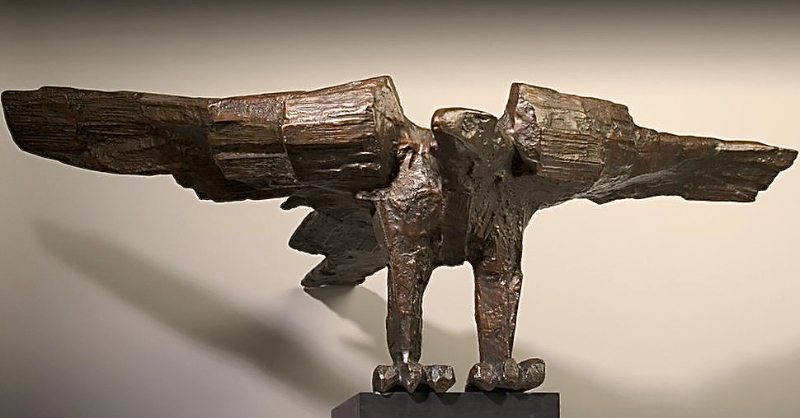
Elisabeth Frink Statue by F. E. McWilliams
When you walk around the Herbert Art Gallery & Museum building you will find on the Earl Street side a statue of a figure. It is a sculpture of Elisabeth Frink, the sculptor who created the eagle lectern in Coventry Cathedral.

The original statue of Elisabeth Frink was made for the Harlow Art Trust in 1957 and is still standing in a public area in Harlow New Town. The Coventry statue was an extra casting made from the original molds in 1965 and shown at the Herbert Gallery in a major exhibition called ‘Metamorphosis’. It was placed on permanent display outside the entrance in 1966.
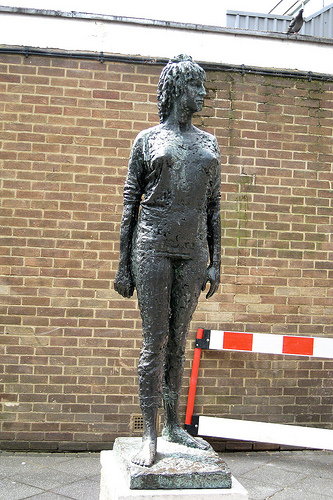
Listed Statue of Elisabeth Frink at West Walk, Harlow New Town
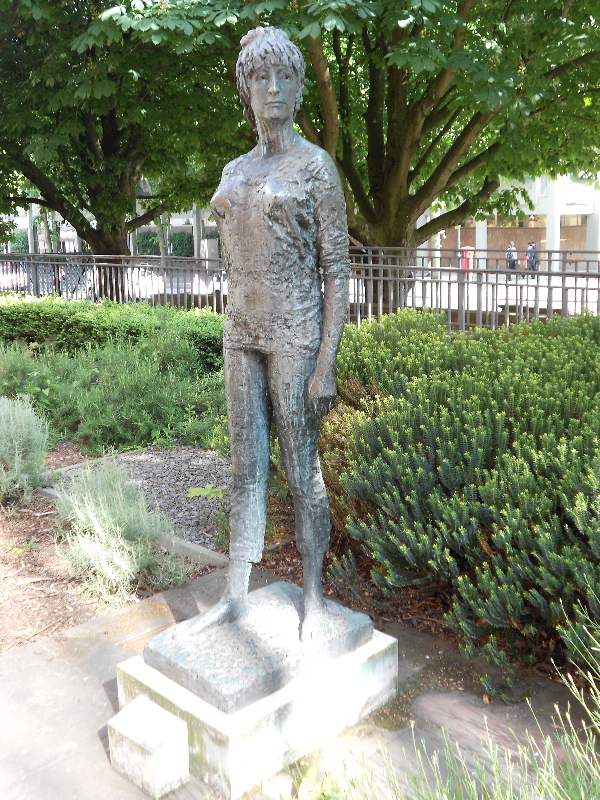
Statue of Elisabeth Frink outside the Herbert Gallery
It may look a little lost in this location, but this is where the original main entrance to the Herbert Gallery was. The entrance has since been altered; a glass wall blocks off the old entrance and it was moved to Bayley Lane. Nowadays you have to go out of your way to see this interesting statue of one of Britain’s famous artists.
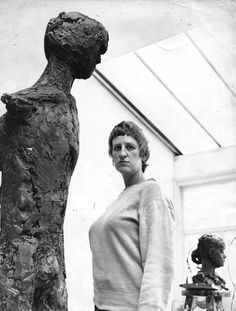
The Model and the Sculpture
The sculpture was created by Frederick Edward McWilliam CBE RA (1909 – 1992). He was a Northern Irish surrealist sculptor, born in Banbridge, County Down. He worked chiefly in plaster, stone, wood and bronze. He studied and later tutored at the Slade School of Fine Art in London. It was at Slade he meet his artist wife Elizabeth Crowther they married in 1932.
He was a interpreter of aerial reconnaissance photographs in the Royal Air Force. After serving in the Royal Air Force in India during World War II, McWilliam taught drawing and sculpture in Bengal (1944–46) and in London at the Chelsea School of Art (1946–47) and at the Slade (1947–66).

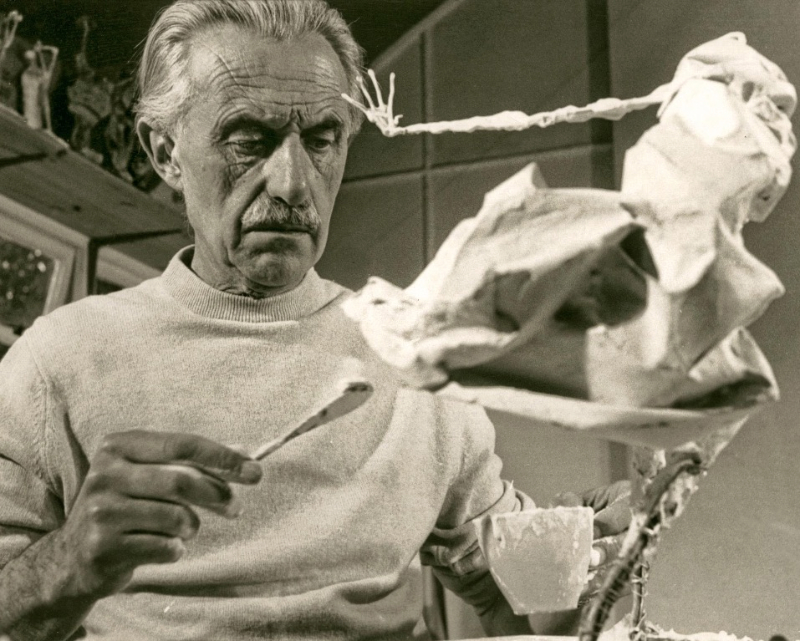
You can see here Frederick applying very thick plaster on to a framework of wire and chicken wire. This was the chosen medium for Elizabeth Frink’s own work for most of her career, so it is interesting that Frederick did a sculpture of Elizabeth in her favoured medium. The plaster was mixed to a thick cream constituency and applied with a palette knife or stick. Here it appears that Frederick is using a spoon handle. After the plaster is dry you can sand or file the plaster off. The final shape is achieved through repeatedly adding or removing plaster.
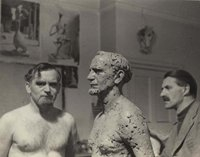
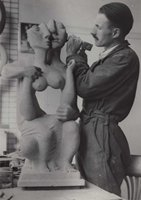
McWillliam’s work was seldom overtly political, but in 1972–73 he made a series of powerful bronzes, Women of Belfast, in response to the bombing of the Abercorn Restaurant in Belfast. He was elected to the Royal Academy in 1959 and was made Commander of the Order of the British Empire in 1966. McWilliam was the subject of a retrospective exhibition at the Tate Gallery in London in 1989.

In September 2009 Banbridge District Council, in Northern Ireland, opened a Gallery and Studio dedicated to McWilliam’s work and named it after him.
